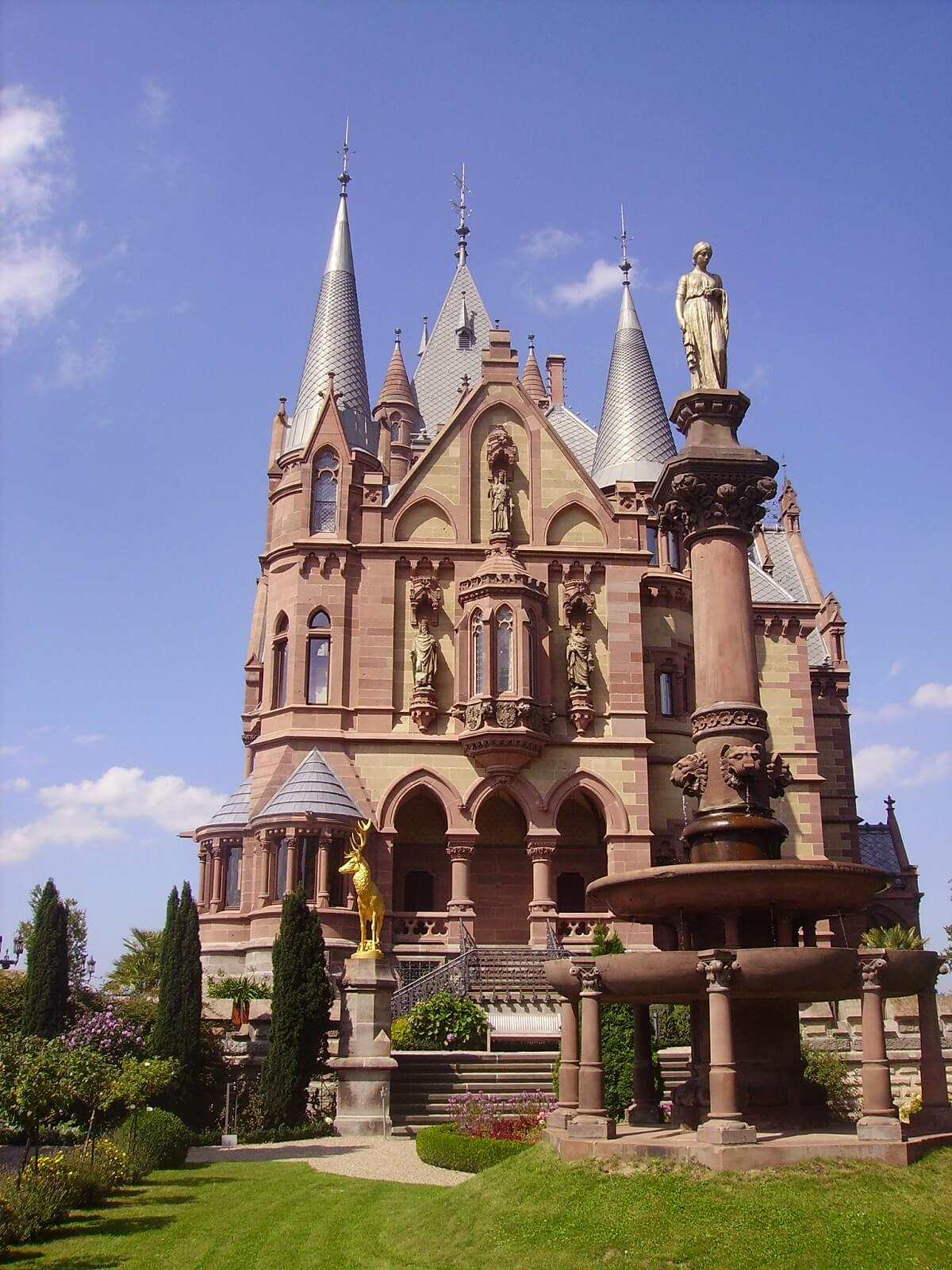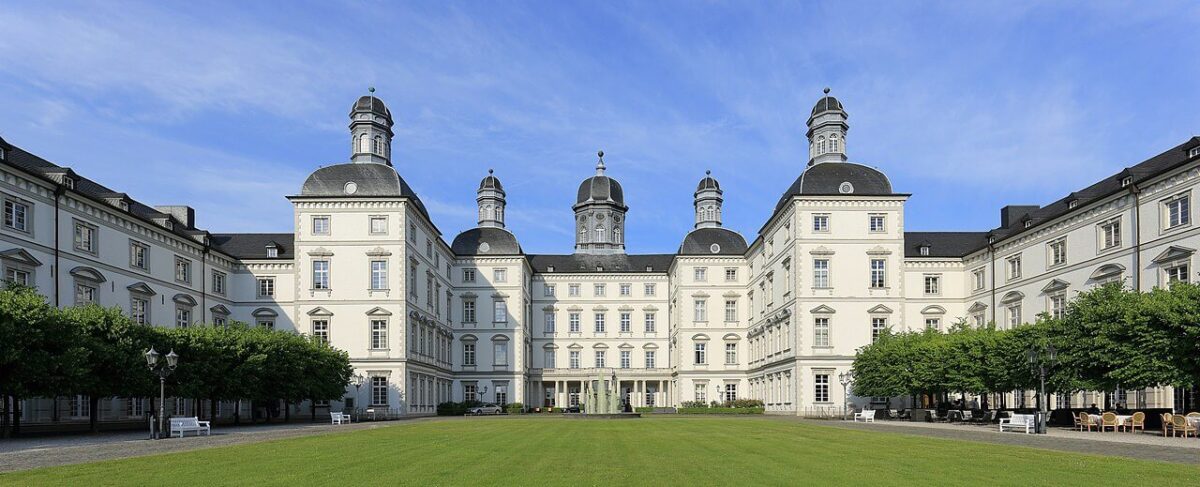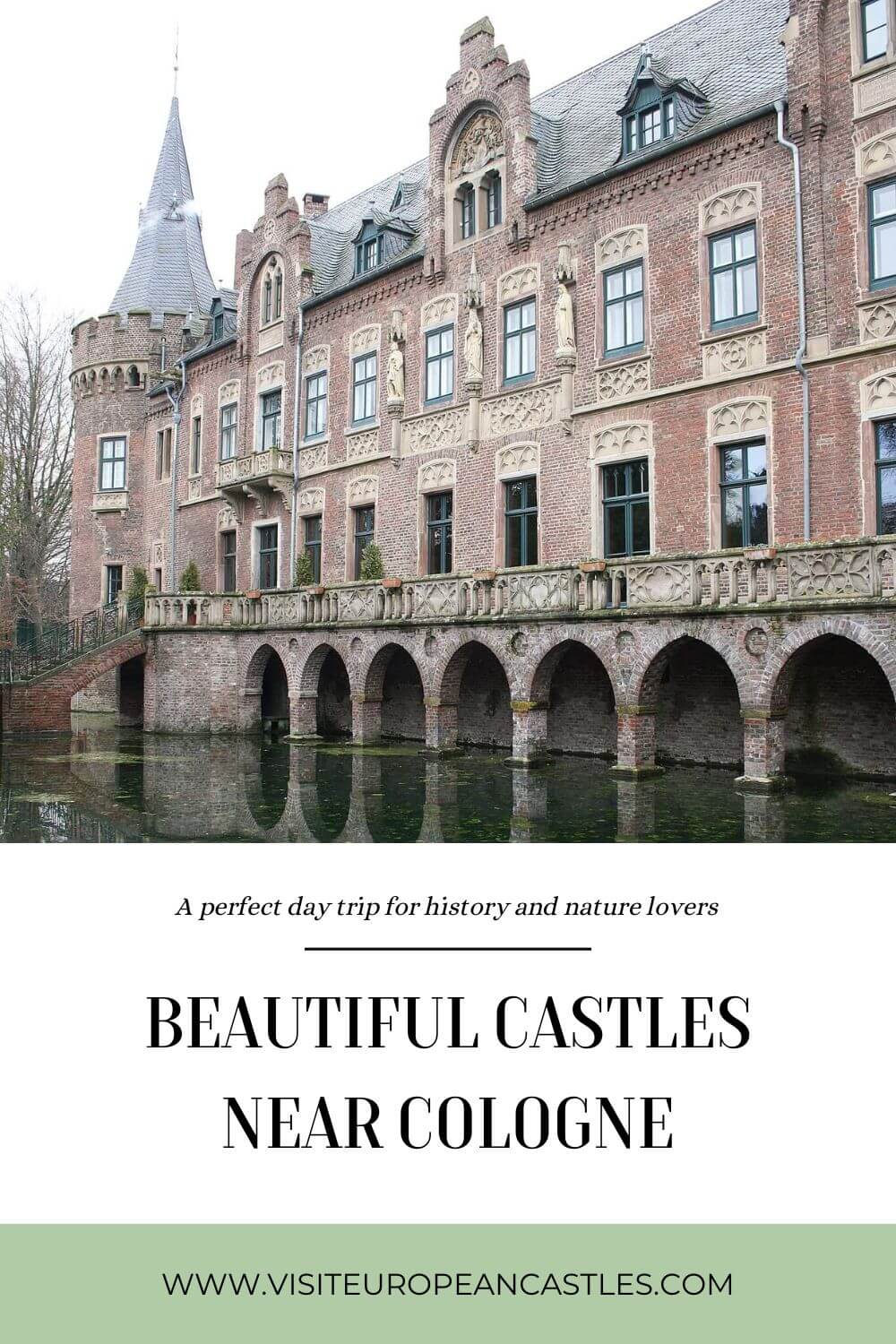The Most Beautiful Castles Near Cologne in Germany
The Middle Rhine Valley between Cologne and Mainz is world famous for its Rhine Romanticism. This special form of Romanticism focused on the Rhine Valley emerged in the 18th century and is still one of the main reasons why this area in Germany is so popular. The Rhine Romanticism is visible in all art forms including architecture. Therefore you can find many beautiful castles near the German city of Cologne, and along the Rhine river.
Visiting these castles in the Rhine Valley is like stepping into a fairy tale. Some of these historic buildings are on the UNESCO World Heritage list and they all play a part in German history. Making a trip to these castles is especially beautiful in the summer months when both history and nature lovers will marvel at the settings of these castles. You can often go for a hiking trip near these castles and admire the architecture, nature, and the great views that the Rhine Valley has to offer.
Here is a list of the best castles in North Rhine-Westphalia that can be visited on a day trip from Cologne.

Schloss Drachenburg
On the Drachenfels hill in Königswinter, on the east bank of the river Rhine, stands a beautiful villa that is designed as a palace. Baron Stephan von Sarter, a wealthy banker, felt he needed a proper palace to accompany his new status as a German baron. Drachenburg Castle was built in just two years, but the Baron never lived here, instead, he choose to live in Paris for the rest of his life.
Though the castle was only built in the late 19th century, it’s architecture shows elements from periods throughout history. It has towers and ornaments that are common in Gothic castles but also Medieval elements.
During World War II, the castle was severely damaged. But later on in the century, the castle has been carefully restored and it was opened to the public. It is now one of Germany’s most visited castles.
The Schloss offers guided tours in English, French, Dutch, Italian, Russian, and Spanish. They also offer special tours including tours for children.
Where: Königswinter
Style: Neo-Gothic exterior and Neo-Renaissance interiors
Built: Between 1882 and 1884
Visitor information: the palace is open to visitors from March-December. Visit the website for current opening days and hours.

Burg Satzvey
Satzvey Castle is one of the most beautiful moated castles in the Rhineland, and arguably in the whole of Germany. These types of German castles are typical of the German ministerial nobility in the middle ages of 14th century and 15th century. They didn’t build their castles on hilltops instead they built moated castles (usually built on two islands) to defend their homes.
At the end of the 19th century, the castle was in bad shape when Dietrich Wolff Metternich zur Gracht renovated and expanded it. New buildings in English style were added and the moats were drained.
Burg Satzvey is the best preserved moated castle in the Rhineland. Some of the buildings like the original castle house, the gatehouse, the north wall and north tower date back 600 years.
Where: Mechernich-Satzvey
Style: Medieval
Built: 1396 with later extensions
Visitor information: the castle restaurant and courtyard are open daily. Guided castle tours are on Saturday, Sunday, and public holidays. The castle offers many events including a Christmas market. Visit the website for more information.

Schloss Burg
On a hill above the River Wupper stands the largest reconstructed castle in Germany. For centuries, since its construction in the 12th century, Burg Castle was the home of the Dukes of Berg until their seat of power moved to Düsseldorf.
After the Thirty Years’ War when the Swedes captured the castle it was destroyed. It was not until the 19th century that architect Gerhard August Fischer proposed to reconstruct the castle. With the financial help of the local community did they restore the castle as you can see today.
The castle offers guided tours in German, English, and French. And they also host a large array of events in the cultural sector, children’s events, and historic markets. The castle is also home to the Bergisch Museum which showcases the history of the region in medieval times and the early modern age.
Where: Solingen
Style: Medieval
Built: 1130
Visitor information: the castle is open Tuesday-Sunday. Visit the website for more information.

Burg Eltz
Sitting atop a 70-meter high rock, overlooking the Elzbach valley stands Eltz Castle. The stone and timber Eltz Castle has been owned by the same family for more than 850 years. Ad it was built on a strategic trade route between Mosel, Maifeld, and Eifel.
The perfectly preserved medieval castle is also known as the “fairytale castle”. It is the perfect example of a typical medieval castle with its towers, turrets, and Knight’s Hall.
Unusual for a castle, Burg Eltz has remained unscathed by wars. Therefore you can now visit an authentic medieval castle which dates back hundreds of years. Inside you will find original furniture, armour, swords, porcelain and gold.
Burg Eltz is located in the midst of Eltz Forest, a beautiful nature reserve. The forest offers multiple hiking trails and outdoor sports and recreation areas. If you want to combine a visit to a German fairytale castle and splendid nature than you should take a trip to Eltz Castle.
Where: Wierschem
Style: Medieval
Built: 1157
Visitor information: the castle is open daily from 1 April to 1 November. Guided tours are in German, French, and English. There are informational flyers in more languages. Visit the website for more information.

Schloss Benrath
Benrath Palace is a Baroque-style palace in Benrath, Düsseldorf. The palace was built in the eighteenth century for Elector Palatine Charles Theodor and his wife after a design by French architect Nicolas de Pigage.
The palace was built as a summer residence and hunting lodge near the German city Düsseldorf where the main residence was situated.
The palace houses three museums: the Museum Corps de Logis is a tour through the living quarters of the palace. The Museum of Garden Art is a unique experience dedicated to the diversity of European garden art. The Museum of Natural History focusses on the flora and fauna of the Düsseldorf area.
Surrounding the palace is an extensive garden and forest park with several ponds, rare trees, and more than 80 species of birds. From the park you can walk all the way to the Rhine.
Where: Düsseldorf
Style: Baroque
Built: 1755
Visitor information: the palace is open Friday-Tuesday. The park is open every day of the year. Visit the website to book your ticket.
Do you want to venture a little further into Germany? Visit the Neuschwanstein Castle in Bavaria or the Hohenzollern Castle in the Black Forest.
Brühl Palaces
In the Rhineland city, Brühl stand not one, but two beautiful palaces. The palaces are part of a UNESCO World Heritage Site as they are among the most important Baroque and Rococo buildings in Germany.

Schloss Augustusburg
Augustusburg Castle is one of the finest Rococo buildings in Germany. The palace was built on the ruins of a medieval castle for elector and archbishop Clemens August of the House of Wittelsbach. Many renown European artists worked on Augustusburg Palace creating a wonderful building where architecture, sculpture, painting, and garden design come together. The palace has Baroque garden which are considered as some of the most authentic 18th-century garden design in Europe.

Falkenlust Hunting Lodge
Hunting Lodge Falkenlust is located just a short stroll from Schloss Augustusburg. The symmetrical Rococo palace is located on the edge of a secluded grove that lies in the flight path of the herons, the favorite prey in falconry. Clemens August was an avid falconer and would often invite hunting parties that would also dine and entertain in the lavish palace. Composer Mozart also visited Falkenlust in 1763.
Where: Brühl
Style: Baroque and Rococo
Built: 1725 and 1729
Visitor information: The palaces are open Friday-Sunday. Admission to Augustusburg Palace is by guided tour only. The guided tour is in German, but they offer audio guides in several other languages. For Falkenlust they also offer audio guides in twelve languages.

Schloss Dyck
Schloss Dyck is a moated castle in the Rhineland that was first mentioned in 1094. The current early-Baroque castle dates back to the 17th century and later in the same century the castle was extended into a four-wing complex.
At the end of the 18th century the interiors of the castle were renovated into a splendid Rococo style with fine wallpaper and furniture. Surrounding the castle lies an English landscape garden that was laid out between 1820 and 1835.
The castle was owned by the zu Salm-Reifferscheidt-Dyck for over 900 years until it became a center for garden art and landscape culture in 1999.
Where: Bedburdyck
Style: early-Baroque and Rococo
Built: 1636
Visitor information: the castle and park are open Tuesday-Sunday, they also offer guided tours. Visit the website for more information.

Schloss Paffendorf
Paffendorf Castle is a 16th century castle surrounded by moats. The castle was owned by the Barons von dem Bongart for more than 400 years until it was sold to the RWE Power who renovated and modernized the castle. In 1861 Ludwig von dem Bongart rebuilt the castle is neo-Gothic style adding turrets, battlements, balustrades, and balconies to the castle.
The castle is home of the “Rhenish Lignite” exhibition and surrounding the castle is a large park with old trees and large water areas. On location is also Brasserie Schloss Paffendorf.
Where: Bergheim
Style: Neo-Gothic
Built: 1531 (rebuilt in 1861)
Visitor information: the park and castle are open to visitors. Visit the RWE website for more information.

Schloss Bensberg
Bensberg Castle is a former hunting lodge built for elector Johann Wilhelm II. Johann Wilhelm commissioned Count Matteo d’Alberti to build a palace in Baroque style with the central axis of the palace aligned with the Cologne Cathedral.
Since 1997 the palace is a luxury five-star hotel. From the palace you can also follow a hiking trail. Book your stay at Schloss Bensberg
Where: Bergisch Gladbach
Style: Baroque
Built: 1703

Poppelsdorfer Schloss
Poppelsdorfer Castle is a Baroque castle in the German city Bonn built on the remains of a Gothic castle. Elector Jospeph Clemens and his nephew Clemens August (who also built Augustusburg and Falkenlust) commissioned French architect Robert de Cotte to build the Baroque palace.
The castle became property of the University of Bonn in 1818. Today it houses the Mineralogical Museum of the University and it’s the home of the Bonn Botanical Garden.
Where: Bonn
Style: Baroque
Built: 1715
Visitor information: The museum and botanical gardens can be visited.
Kurfürstliches Schloss Bonn
In 1597 Bonn became the capital and residence of the Electorate of Cologne. When a former palace was destroyed during the siege of Bonn by Elector Joseph Clemens, he started the build a new palace. The magnificent palace has four wings, but disaster struck when in 1777 the main building of the palace was destroyed in a fire. Only the courtyard garden wing with the two corner towers was rebuilt.
The palace lost its importance when the electoral rule came to an end. The Prussian King Friedrich Wilhelm III decided that Bonn was to be the location for a new university. And since then the Kurfürstliches Schloss in Bonn is one of the university residences.
Where: Bonn
Style: Baroque
Built: 1697
Visitor information: the palace is part of the university and can not be visited for a palace tour. The International Silent Film Festival takes place in the courtyard each August.
Schloss Burgau
Burgau Castle is a moated castle in the Burgau Forest that dates back to the Middle Ages, though the earliest traces date back to 1100. The castle was built by the Counts of Heinsberg but it changed hands multiple times in several noble families. The Residential Tower is the oldest part and dates back to the Middle Ages. After that the south, east, and north wings were built. In 1551 a bay window was added to the residential tower, it is decorated with reliefs that refer to wedding and ancient literature. Around 1730 the castle was transformed into a Baroque style castle.
Fun fact: Painter Hans Holbein came to the castle in 1539 to paint the portrait of Princess Anne of Cleves. This portrait would be shown to King Henry VIII of England before he decided to marry her. Henry married Anne of Cleves but found that he did not like her. They would divorce and after she lived at the English court (not a bad life, considering the fate of Henry VIII’s other wives).
Where: Düren
Style: Medieval/Baroque
Built: Middle Ages/rebuilt after World War II
Visitor information: the castle is open to visitors and there is also a castle café.

Burg Nideggen
Nideggen Castle is a hill castle that was the seat of the Counts and Dukes of Jülich. It was built on a strategic location to protect the area against the archbishops of Cologne. The castle has been destroyed multiple times in its history. The last time in 1689 during the War of the Palatine Succession when the castle was burned down. Earthquakes in 1755 and 1878 destroyed the castle even further.
In 1888 the Nideggen townsfolk wanted to preserve the castle. They bought the castle which was later given to the county of Düren as a gift. Since 1901, the castle has been partly rebuilt and the castle ruins are now used as a museum of local history.
Where: Nideggen
Style: Romanesque/Medieval
Built: 1177
Visitor information: the museum is open Tuesday-Sunday

Schloss Morsbroich
Morsbroich Castle is located on the place of a late medieval castle. The current Rococo castle is built in the 18th century as a pleasure palace surrounded by an English landscape style park. After the Second World War the city Leverkusen bought the palace and turned it into a museum. Museum Morsbroich is a modern art museum surrounded by the Sculpture Park Schloss Morsbroich
Where: Leverkusen
Style: Rococo
Built: 1775
Visitor information: the museum is open Tuesday-Sunday. Visit the website for more information.

Cochem Castle
Overlooking the Mosel River Valley stands the medieval Cochem Castle (also known as Reichsburg Castle). Though the castle was built in Medieval times, it was heavily damaged in 1689 by King Louis XIV.
For many years, the castle remained a ruin until Louis Ravené bought and restored the castle in 1868. Like many in his time, he was inspired by German Romanticism and so he didn’t restore the castle to its original design instead he restored the castle in Neo-Gothic style.
A tour of the castle includes the Knight’s Hall, the Dining Hall, the Trophy Room, and the Bower. Next to regular guided tours, the castle also offers several events such as the “Knights’ Feast” on Fridays and Saturdays, a castle festival in August, and “Cochem Castle Christmas”.
Where: Cochem
Style: Neo-Gothic
Built: 1100 (rebuilt in 1868)
Visitor information: the castle is open to visitors. Visit the website for current opening times. Guided tours are in English and German.






